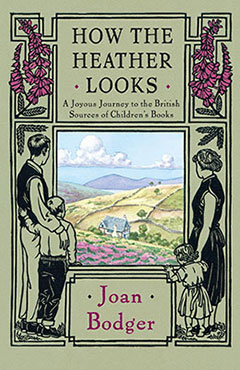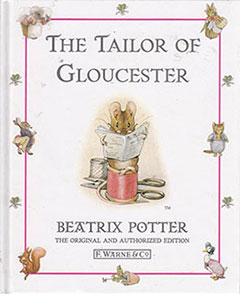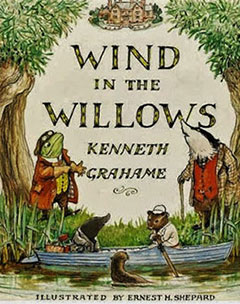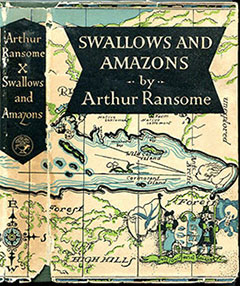 If any good has come from the quarantine of 2020, it’s made me a heavy library user — my personal library, that is, since the public libraries are closed. I found this book in a dresser drawer. (When I redid my office, I didn’t want the clutter of bookcases, instead opting for vintage dressers and armoires — lovely to look at but I forget what’s in them). It was exactly what I needed.
If any good has come from the quarantine of 2020, it’s made me a heavy library user — my personal library, that is, since the public libraries are closed. I found this book in a dresser drawer. (When I redid my office, I didn’t want the clutter of bookcases, instead opting for vintage dressers and armoires — lovely to look at but I forget what’s in them). It was exactly what I needed.
This time of year, I miss England, a cozy, cottage‑y, bookish country. Whenever my husband and I have gone to the UK, it’s always been in the fall, and we’re never there long enough. Heather is a travel memoir about one family’s 1958 summer-long ramble in search of actual settings in children’s books. First published in 1965, the book was reprinted in 1999.
The Bodger family wasted no time. They stepped off the Cunard ship (the best way to travel!), rented a tiny car that barely fit two adults, two children and luggage, and headed for Whitechurch, the village Randolph Caldecott immortalized in his drawings. In the late fifties, children’s literature pilgrimages seemed frivolous in a country still reeling from five years of war. In her inquiries with locals, Joan Bodger, armed with Bartholomew’s Road Atlas of Great Britain (one inch equals one mile), was sometimes looked upon with suspicion. But she persisted and made wonderful discoveries.
 In the “sun-flooded fields” of Harwell, they found L. Leslie Brooke’s Pillar House, occupied by a woman who had reached the top of the list for a new council house. She decided her little house, lacking a single right angle, was best after all. Joan was delighted to step inside the “crooked little house” from Ring o’ Roses. I leafed through my own Ring o’ Roses, better appreciating Brooke’s careful lines and attention to detail.
In the “sun-flooded fields” of Harwell, they found L. Leslie Brooke’s Pillar House, occupied by a woman who had reached the top of the list for a new council house. She decided her little house, lacking a single right angle, was best after all. Joan was delighted to step inside the “crooked little house” from Ring o’ Roses. I leafed through my own Ring o’ Roses, better appreciating Brooke’s careful lines and attention to detail.
In Gloucester, the Bodgers tracked down the tailor’s house from Beatrix Potter’s The Tailor of Gloucester. Knowing the source of the story, I marveled anew at Potter’s jewel-like watercolors.
 Last summer, I planned a trip to England (that I sensibly changed) in which we’d fly overnight to London, rent a car, and drive to Cornwall. As Joan Bodger pointed out, a trip that took an hour on U.S. highways took almost all day in England. In Cornwall, the Bodgers camped two weeks in a caravan, like Toad in The Wind in the Willows. They encountered the Romany, still segregated, a few times. Once, while hiking, they found grass blades tied in patterns, signals only the Romany could interpret. I dug through my folklore books and found Raymond Buckland’s Gypsy Witchcraft & Magic. While there are some charms, the book is a fascinating resource of Romany folkways.
Last summer, I planned a trip to England (that I sensibly changed) in which we’d fly overnight to London, rent a car, and drive to Cornwall. As Joan Bodger pointed out, a trip that took an hour on U.S. highways took almost all day in England. In Cornwall, the Bodgers camped two weeks in a caravan, like Toad in The Wind in the Willows. They encountered the Romany, still segregated, a few times. Once, while hiking, they found grass blades tied in patterns, signals only the Romany could interpret. I dug through my folklore books and found Raymond Buckland’s Gypsy Witchcraft & Magic. While there are some charms, the book is a fascinating resource of Romany folkways.
The Bodgers trekked up and down England on King Arthur’s trail. They paddled a boat on the Thames in search of Rat’s house, Pan’s island, and Toad Hall (Mapleduram). Joan Bodger’s detective work, in an era before the internet and GPS, was impressive. She brought the books along, comparing the illustrations to the scenery. She often found people still living in the villages who knew Kenneth Graham or Mrs. Heely (Beatrix Potter’s married name) and was even invited to visit A. A. Milne’s widow. In Kipling country, they found Pook’s Hill. I sat down with my Puck of Pook’s Hill and the sequel, Rewards and Fairies, to steep myself in stories of British history. Their excursion to the Bronte Parsonage in Yorkshire had me back in my bookstacks. I found Rebecca Fraser’s adult biography, The Brontes: Charlotte and Her Family, but was excited to unearth the more enjoyable The Young Brontes (1937) by Mary Louise Jarden with illustrations by Helen Sewell.
 How the Heather Looks seems the perfect vacation, even with a two-year old who needed lots of naps, a nine-year-old medievalist who wanted to stop at every old ruin to look for bloodstains, English weather, English food, the clown rental car, and getting lost. The Bodger’s trip is my idea of heaven. Joan Bodger even managed to meet the famously grumpy and anti-social Arthur Ransome. When the elderly author autographed their copy of Swallows and Amazons, he was surprised the nine-year-old boy had read his books, believing American children only watched television.
How the Heather Looks seems the perfect vacation, even with a two-year old who needed lots of naps, a nine-year-old medievalist who wanted to stop at every old ruin to look for bloodstains, English weather, English food, the clown rental car, and getting lost. The Bodger’s trip is my idea of heaven. Joan Bodger even managed to meet the famously grumpy and anti-social Arthur Ransome. When the elderly author autographed their copy of Swallows and Amazons, he was surprised the nine-year-old boy had read his books, believing American children only watched television.
In 1958, I was seven and had just learned to read proficiently. This American child couldn’t get her hands on enough books! She grew up to own a library, a bane when moving, but a blessing during a pandemic. What else is there to do? Watch YouTube? Netflix? Livestream stuff?
Arthur Ransome told Joan Bodger he’d watched television himself and it seemed like journeying through a strange country on a very fast train: “It’s like seeing everything through a little slot. You can never climb down and go back once you are aboard …”
I’m more than weary of viewing the world through the little slot of screens. How the Heather Looks is a pleasant, meandering train through a country most of us know through children’s books, one that stops often so you can browse your own collection or make notes of what to read next.
Note: On Amazon, you can treat yourself to this book on Kindle (another slot, I’m afraid) for $12, or pay the insane price of $902.81 for the paperback. I own the first edition 1999 hardcover which I will put back in the drawer very carefully.
